Health
Why Is My Tongue White and Fuzzy? Symptoms, Causes, and Cures
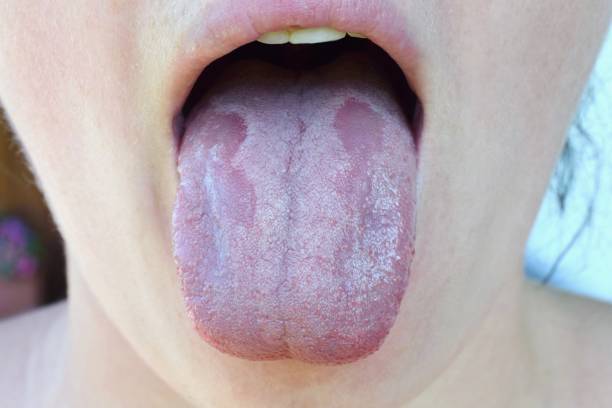
Introduction
It can be shocking when you wake up to see your tongue coated in white fuzz. Looking in the mirror, you thrust out your tongue and ask, “Why is my tongue so white?” You’re not alone; a great deal of other people grapple with this perplexing problem.
This guide clearly outlines the symptoms, the causes, and the cures in layman’s language. Moving forward, let’s explore this widespread and often misinterpreted issue through relatable anecdotes and practical guidance.
What Does a White Tongue Look Like?
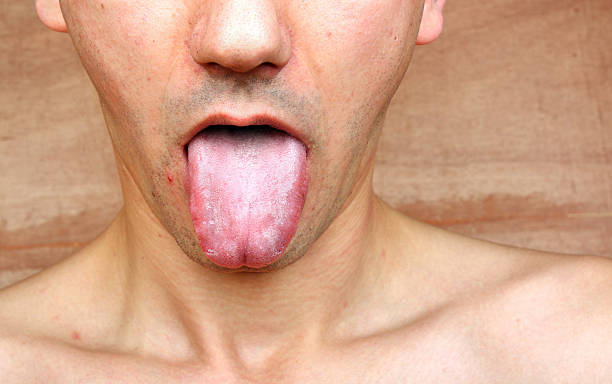
A white tongue frequently seems to be coated or peppered with patches. It may feel like a soft carpet. At times, the coating is nothing more than a delicate film. At other times, thick white patches spread across your tongue. You may sense an odd taste or poor breath.
For instance, Sarah, a 28-year-old teacher, noticed a white film after an exhausting week of grading papers while popping coffee at every moment. She felt self-conscious in conversations, worrying that other people could detect her breath.
Signs to Watch Out For
What makes my tongue white? More often than not, it’s accompanied by other symptoms. Bad breath is quite common. You may detect a feeling of dryness in your mouth. Some people also notice a metallic taste.
If the condition is more severe, the tongue often feels tender or highly sensitive. John, a 45-year-old mechanic, let his white tongue slide until it flared up whenever he ate spicy food. Such warning signs may signal the underlying trouble, so stay attuned to them.
Several conditions lead to a white tongue
A white tongue may arise from numerous different causes. Let’s single them out one by one. Knowing what sets off each cause enables you to select the most effective remedy.
Insufficient oral hygiene
Forgetting to brush or floss your teeth can result in a white tongue. Remnants of food and accumulating bacteria combine to create a coating. Sarah confessed that because of her hectic routine, she frequently neglected to brush her tongue. Had she done a brief scrub, the problem could have been averted.
Dehydration
When you fail to drink enough water, your mouth becomes dry. Consequently, this environment lets bacteria multiply, resulting in a white film. Toward the end of an exhausting hike, 19-year-old Mia spotted that her tongue had turned white. Time had passed since she last took a drink, and her body was yelling out for hydration.
Oral Thrush
Oral thrush, an unpleasant fungal infection, often lies behind this symptom. It produces thick white patches. Babies, older adults, and individuals whose immune defenses are compromised, including 60-year-old Linda after chemotherapy, commonly experience this. Linda could hardly swallow because cottage cheese seemed to cover her tongue, urging her to seek medical aid.
Smoking or Drinking
Using tobacco or heavy alcohol consumption can irritate the tongue. It may come to resemble a fuzzy blanket. Mark, a 35-year-old bartender, realized that after years of smoking,g his tongue had fundamentally changed. By cutting back, she resolved the problem.
Medications or underlying health conditions
Certain medications, such as antibiotics, tamper with oral bacteria and can trigger a white tongue. Conditions such as diabetes or autoimmune illnesses may likewise precipitate it. Emma, a 50-year-old nurse, noticed her tongue becoming whitish right after she began a new prescription. Her doctor tweaked her medications to remedy the problem.
Times to Be Concerned About a White Tongue

In most instances, a white tongue pose no harm. However, at times, it can point to a more serious condition. If your tongue remains pale white for several weeks, hurts, or is paired with a fever, consult a doctor.
Sustained white patches might be a sign of oral cancer or other infections, like thrush. Resist panicking, but do not deny it, either. Owing to her prompt visit to the doctor, Linda’s thrush was detected at an early stage.
White tongue treatment
Asking yourself, “What has caused my tongue to turn white, and how can I make it go away?” The great news? In most instances, you can manage the problem at home. Take a look at this step-by-step plan to clear your tongue.
Step 1: Boost oral hygiene.
Brush your teeth twice a day. Don’t forget to clean your tongue. Employ a gentle toothbrush or use a tongue scraper. Sarah took up daily tongue scraping, and the white coating was gone in only a few days.
Step 2: Keep Yourself Well-Hydrated
Stay well hydrated by drinking lots of water. Strive to drink 8 glasses per day. Mia started toting a water bottle, and her tongue regained its natural pink color.
Step 3 : Treat Oral Thrush
Physicians typically prescribe antifungal medications for treating thrush. Linda rinsed her mouth with the rinse her dentist supplied. In just a week, her tongue clearly appeared healthier.
Step 4: Give up Bad Habits
Curb your intake of tobacco or alcohol. Mark put on nicotine patches, and his tongue soon showed improvement. Even modest changes can have a real impact.
Step 5: Check Your Diet
Be sure to consume well-balanced meals. Limit your intake of sugary foods that bacteria thrive upon. Emma started incorporating yogurt with probiotics into her diet, which adjusted the balance of bacteria in her mouth.
Step 6: See a physician
If your at-home care fails to relieve the symptoms, it is time to visit a dentist or doctor. They might perform tests to detect underlying causes. John’s burning tongue demanded a professional assessment to rule s
How to Avoid a White Tongue
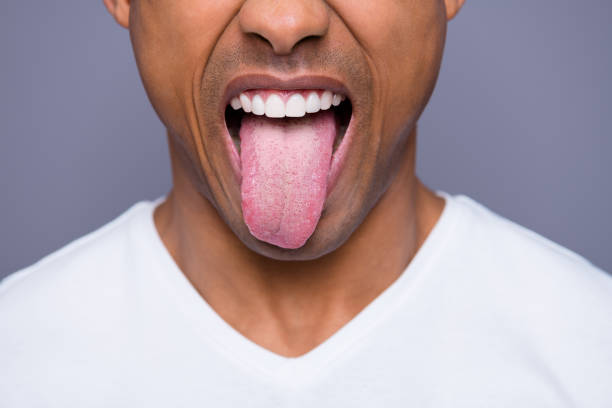
Preventing the onset of a white tongue is simpler than treating one. Brush your teeth and floss every day. Brush your tongue on a regular basis. Stay hydrated by sipping water throughout the day. Stay away from smoking and curb your alcohol intake.
Nourish your mouth bacteria by including options such as yogurt in your diet. Consistent trips to the dentist detect issues at an early stage. Sarah now heads to her dentist twice a year to maintain a pretty pink and healthy tongue.
Real-Life Success Stories
Listening to others’ experiences can give you inspiration. By increased water consumption and more thorough tooth brushing, Mia, the hiker, cleared her white tongue.
Mark, the bartender, stopped smoking, and his tongue was clear in just a few weeks. Linda’s thrush treatment proved a miracle, greatly boosting her confidence. Taken together, these stories prove that straightforward measures can reply to the question, “What makes my tongue white?”
Why It Matters
Having a white tongue is not an aesthetic matter alone. It may undermine your confidence. An unpleasant mouth odor or lingering discomfort may prompt you to step back from chatting or smiling.
Addressing this concern lets you feel better, both physically and emotionally. Sarah was able to feel like herself once her tongue had cleared. You deserve that very same relief.
Final Thoughts
Why is my tongue white? It might stem from poor hygiene, dehydration, a thrush infection, or habits in your lifestyle. In most instances, the issue can be resolved by increasing proper care, hydration, or seeking medical assistance. Begin by doing basic tasks such as brushing and staying hydrated.
Should the issue continue, consult a professional. Your tongue and confidence will owe you a big thank-you. Leave your story in the comments below, and ask your questions too. So keep the dialogue going!
Health
Signs Your Body Is Lacking Vitamins: Understanding the Hidden Messages Your Body Sends

Vitamins are essential nutrients that play a vital role in keeping our bodies functioning smoothly. From supporting immunity to improving energy, maintaining healthy skin, and keeping our organs working properly — vitamins are at the heart of our overall well-being. But despite their importance, many people don’t realize they’re deficient until symptoms start to appear.
Vitamin deficiency can happen due to an unbalanced diet, digestive issues, stress, lifestyle habits, or certain medical conditions. Thankfully, your body gives you warning signs long before the problem becomes severe. Understanding these signs can help you take action early and protect your long-term health.
Below are some of the most common signs your body is lacking vitamins, along with how they relate to your nutritional needs.
1. Constant Fatigue and Low Energy Levels
Feeling tired all the time—even after sleeping well—can be a major sign of vitamin deficiency. The most common vitamins connected to low energy are:
- Vitamin B12
- Vitamin D
- Iron (not a vitamin, but linked to deficiency-related fatigue)
Vitamin B12 helps produce red blood cells and supports the nervous system. When levels drop, the body cannot carry enough oxygen through the blood, leaving you feeling exhausted. Low Vitamin D, especially during winter months, also contributes to chronic fatigue because it affects mood and muscle function.
2. Hair Loss and Weak Nails
If you’re noticing more hair falling out during brushing or showering, your body may be lacking:
- Biotin (Vitamin B7)
- Vitamin B12
- Vitamin D
- Zinc
Biotin is essential for hair strength and growth, while Vitamin D helps create new hair follicles. Some people also experience brittle nails or slow nail growth when these nutrients are low.
3. Dry Skin, Acne, and Premature Aging
Your skin is often the first place to show nutrient deficiencies. Vitamins responsible for skin health include:
- Vitamin A
- Vitamin C
- Vitamin E
- Omega-3 fatty acids (not a vitamin, but essential)
Dry, flaky skin, persistent acne, and fine lines may signal that your body isn’t getting enough nutrients to repair tissue and fight inflammation. Vitamin C also helps produce collagen — the protein that keeps skin firm and youthful.
4. Frequent Illness or Weak Immunity
If you catch colds easily or recover slowly, your immune system may be struggling due to low levels of:
- Vitamin C
- Vitamin D
- Vitamin B6
Vitamin C strengthens immune cells, while Vitamin D activates immune defenses. Low levels make your body more vulnerable to viruses and infections. If you’re frequently sick, your body could be signaling that it needs an immune-boosting nutrient reset.
5. Muscle Cramps and Weakness
Muscle pain, cramps, twitching, or weakness are often linked to deficiencies in:
- Magnesium
- Vitamin D
- Calcium
- Potassium
These nutrients work together to regulate muscle function. When one or more is low, you may experience sharp leg cramps, nighttime muscle spasms, or difficulty lifting heavy objects. These symptoms are especially common in people who sweat a lot, exercise intensely, or drink insufficient water.
6. Vision Problems, Especially at Night
Difficulty seeing clearly at night or dry, itchy eyes can signal a lack of Vitamin A.
This essential vitamin maintains eye moisture and supports the cornea. Severe deficiency may lead to night blindness and other eye disorders. If your eyes feel tired or strained often, it may be time to evaluate your vitamin intake.
7. Mood Swings, Anxiety, or Depression
Your mental health is deeply connected to your nutrition. Certain vitamins help regulate brain chemicals such as serotonin and dopamine. Deficiencies in the following vitamins can affect mood:
- Vitamin D
- Vitamin B12
- Vitamin B6
- Folate (Vitamin B9)
Low Vitamin D levels are strongly associated with seasonal depression, while B-vitamins help keep the nervous system stable. If you’re experiencing unusual mood swings or increased anxiety, a vitamin deficiency might be part of the issue.
8. Slow Wound Healing
If cuts or bruises take longer to heal than usual, you may be low in:
- Vitamin C
- Vitamin K
- Zinc
Vitamin C is essential for collagen production, which repairs skin tissue. Vitamin K helps your blood clot properly after injury. Slow healing is one of the clearest signs your diet may be lacking essential nutrients.
9. Tingling or Numbness in Hands and Feet
A “pins and needles” sensation often points to deficiencies in:
- Vitamin B12
- Vitamin B6
- Vitamin B1 (Thiamine)
These B vitamins support nerve health. Without them, nerves may become damaged, causing numbness, tingling, or burning sensations in the limbs. This symptom is particularly common in people with digestive issues or a vegan diet lacking supplements.
10. Cracked Lips or Mouth Ulcers
Painful cracks at the corners of your mouth or frequent mouth sores can be caused by low levels of:
- Vitamin B2 (Riboflavin)
- Vitamin B3 (Niacin)
- Vitamin B12
- Iron
Your lips and mouth heal quickly, making them sensitive to nutrient changes. Persistent sores are a clear signal that your body is missing key vitamins.
11. Pale or Yellowing Skin
Skin color changes often indicate:
- Vitamin B12 deficiency
- Iron deficiency
- Low folate levels
When your body lacks these nutrients, it struggles to produce red blood cells, leading to pale or yellowish skin (a condition called jaundice in severe cases). Fatigue and shortness of breath may accompany these symptoms.
How to Correct Vitamin Deficiencies
If you suspect vitamin deficiency, here are safe steps to improve your levels:
✔ 1. Improve Your Diet
Include more whole foods such as:
- Leafy greens
- Eggs
- Fish
- Fruits
- Nuts and seeds
- Whole grains
- Lean meats
✔ 2. Spend More Time in Sunlight
Just 15–20 minutes of sunlight helps boost Vitamin D naturally.
✔ 3. Consider Supplements
If dietary changes aren’t enough, supplements may help. However, always consult a healthcare provider before starting any supplement plan.
✔ 4. Get Blood Tests
A simple blood test can show which vitamins you’re lacking. This is the most accurate method.
✔ 5. Stay Hydrated
Water helps your body absorb vitamins and transport them effectively.
Final Thoughts
Your body is always communicating with you — through your skin, energy levels, mood, and even hair. The signs your body is lacking vitamins often start small, but if ignored, they can affect long-term health. By staying aware of these signals and making timely lifestyle changes, you can restore balance, improve immunity, and feel healthier overall.
Remember, good nutrition is not just about eating more — it’s about eating right. If you listen closely, your body will always tell you what it needs.
Health
Teething Rash in Babies: Causes, Remedies, and Prevention Tips

Introduction
When your child is about to get his or her first tooth, it is an interesting moment. To a lot of parents, however, it is accompanied by concern. On soft cheeks or chin, they see a red and bumpy rash caused by teething.
It is devastating when your small baby is not in a comfortable state. This article discusses the cause of teething rash, easy solutions to calm it, and suggestions to avoid the same. Let us make your baby smile as it is teething!
Teething Rash: What Is A Teething Rash?

A teething rash is a common skin problem of babies. It manifests in the form of red and rough patches, normally on the face, neck or chest. It occurs when babies drool a lot during teething.
The additional saliva rubs on their sensitive skin. An instance is when my friend, Sarah, realized that her 8-month-old baby, Emma, got a red chin after chewing on toys all day long. It does not harm them, but it makes the babies cranky.
Why does teething give a rash?
Drooling occurs in babies during teething. The gums are sore, and they eat everything. This slobber remains on their skin, and this irritates.
The enzymes contained in saliva possess the capability to destroy sensitive infant skin. Otherwise, it causes a condition known as teething rash. Emma drooled so that her chin turned red. It may be aggravated by cold or coarse fabrics.
Additional Reasons for Tooth Rash
Not always is that teething rash is due to drooling. The irritation can be added by food or milk adhering to the skin. Contributing factors could also be harsh soaps or wipes.
As an example, Sarah had applied scented wipes on Emma, and it aggravated the rash. A chapped skin by wind or dry air may also resemble a teething rash. When in doubt, make sure to see a doctor.
How To Recognize Teething Rash
A teething rash appears as little red bumps or chapped skin. It is normally on the cheeks, the chin, or on the neck. The skin may appear rough or even be warm. Contrary to eczema, it conditions are connected to drooling and teething.
In case the rash of the baby with the teething rash spreads or the rash contains pus, it may not be the teething rash. A brief assessment by the pediatrician will eliminate confusion.
Affect on Parents
The sight of a teething rash in your baby may be very overwhelming. You may also feel helpless and there may be questions like whether you are doing enough.
Sarah was crying because Emma could not get rid of her rash. Worry is common, but you are not the first one. When you have handy solutions, you can alleviate the symptoms in your baby and become a superhero parent once again.
Treatments to Calm a Tooth Rash
Fortunately, a teething rash can be readily treated by a tender touch. These are some of the effective solutions:
- Prevent the Skin to getting wet
Be careful of wiping drool by using a soft and clean cloth. To prevent irritation, Pat, not to rub. Sarah put a muslin cloth over Emma, and it did. Take wet bibs off frequently. There is less chance of a teething rash developing in dry skin.
- Use a Barrier cream
Use a baby-safe barrier cream (such as petroleum jelly or zinc oxide). These prevent the skin from saliva. Applying a very little amount of Vaseline on Emma’s chin, the red shifted within days. Opt to use fragrance-free products always.
- Proffer Teethers
Provide your infant BPA-free teethe toys. They keep gums occupied thereby reducing drooling. Emma adored to use her chilled teether and it made her gum feel better. You can make your baby safe by avoiding toys that can have small parts.
- Cleanse Gently
Clean the affected place with tepid water and soap that does not have any fragrance. Keep away hard wipes or soaps. Dry the skin later with pat. This prevents an increase in teething rash.
- Visit a Pediatrician
Ask a doctor in case the rash does not get better within several days. They can prescribe a low concentration of hydrocortisone cream. Adult creams should never be used without a doctor recommendation. Sarah visited the pediatrician, who she proved that it was nothing more than a teething rash.
Prevention Tips: Teething Rash

A teething rash is easier to prevent than you can imagine. This is how to maintain the smooth skin of your baby:
- Bibs Wisely
Place your infant’s bib (soft absorbent one). Replace it when wet. Cotton bibs did miracles with Emma. They slurp before it lies on the skin.
- Moisturize Regularly
Apply every day a baby moisturizer that does not contain fragrance. It enhances the skin barrier thus it is less likely to develop a teething rash. Use it on a dry and clean body of your baby.
- Avoid Irritants
Avoid using scented lotions or wipes or detergents. They may aggravate a teething mat. Use hypoallergenic products. Sarah changed to unscented wipes, and Emma’s skin thanked her.
- Have some Teethers available
Having a clean teether at the ready. It minimizes the amount of drooling and keeps your baby in good mood. Refrigerated (non-frozen) teething rings are an excellent idea when it comes to sore gums and the prevention of rashes.
How to be Concerned with a Tooth Rash

Teeth rashes improve within some days. However, move to a doctor when there is the spreading of the rash, oozing, or fever. It may be an infection or any other skin problem. Sarah was happy that when Emma had this strange rash; she consulted her pediatrician. You woad fuoud your parental instincts.
A Parents Voyage
Any parent does not want his/her baby to be uncomfortable. Teething rash can be so frustrating that you will be tempted to feel a failure, and not. The little actions, such as cleaning drool or a barrier cream, make a large difference. When the rash of Emma wore away, and her smile came again, Sarah was proud. You can do it, too!
Conclusion
A teething rash is one of the bumps in the parenting road. It develops due to the irritation of the skin of baby on drooling during teething. You can calm it down quickly with gentle care, such as ensuring one keeps the skin dry and applying safe creams.
It is easy to prevent it by wearing bibs, hydrating, and preventing irritants. A pediatrician will help you out whenever you are in doubt. Soon, the fussy moments will be over as you will hear your baby giggle with happiness. Love and learn, and you will beat the teething rash!
Health
Fennel Seeds for Digestion: Nature’s Remedy for a Healthier Gut
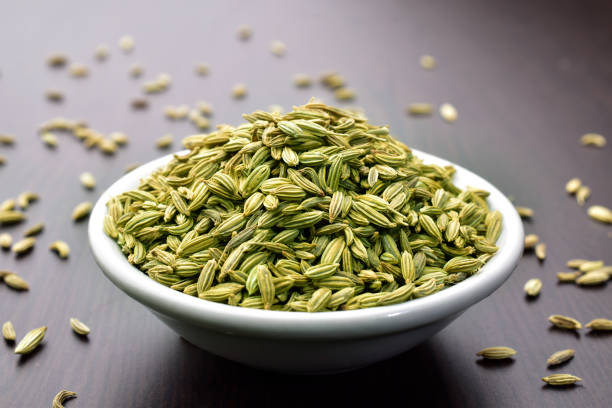
Introduction
Fennel seeds are mini golf balls of power. They have been centuries-old stomach soothers. Consider a hot soothing homemade solution left by grannies. These small seeds are sweet and licorice tasting. They are the natural fix to flatulence and abdominal pain. Let us see what fennel seeds can do to change your gut health.
Why Fennel Seeds prove to be a good friend to the gut
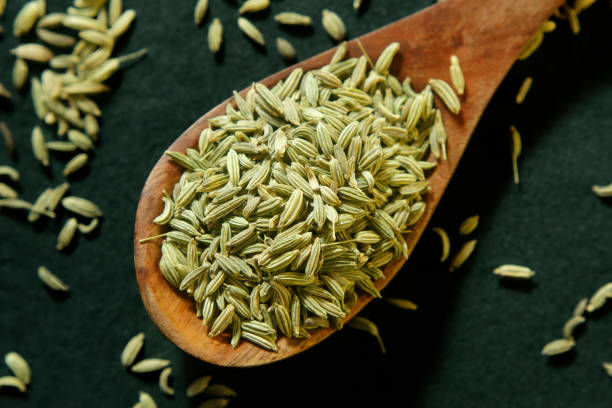
Fennel is very nutritious. They have vital oils such as anethole. Such oils relax the digestive tract. They decrease bloating and soothe cramps. After a stomach dinner,, anyone who has a sensitive stomach, fennel seeds can be considered to be a bedside.
Gnawing fennel seeds is an age-old tradition after meals. They are also used as a dessert in most cultures after food. This is not a habit of having fresh breath only. It initiates digestion, and this aids your body in the processing of food.
A Real-Life Story
Sarah is 32 years old and is a teacher; she has problems with bloating. She had a painful feeling after heavy meals. This affected her confidence. Her aunt advised fennel seeds one day.
Sarah also doubted, but chewed one teaspoon after dinner. She became less bloated in a few days. She was lighter and more cheerful. Her new remedy consists of fennel seeds.
The Magic of Fennel Seeds
Fennel seeds smooth the muscles of the stomach. This aids in the expulsion of gas traps. They increase the production of enzymes, too. This softens food digestion. It was not a surprise that fennel seeds are a staple in herbal medicine!
And they are high in fiber. Fiber makes you have fefewert bacteria. It helps to avoid constipation and brings about normal bowel movements. The healthier your gut, the happier you are.
Simple Methods of Using Fennel Seed
It is easy to integrate fennel seeds. After the meals, chew out a teaspoon. It is fast and efficient. There is also a possibility of brewing the fennel tea. Simply soak a spoonful of seeds in boiling water for ten minutes. Drink slowly to get immediate relief.
Soups or salads should have crushed fennel seeds added to them. Their taste improves food and helps digest it. You can bake them even in bread. It is a delicious approach to look after your gut.
An Earth-Shattering Discovery by Mark
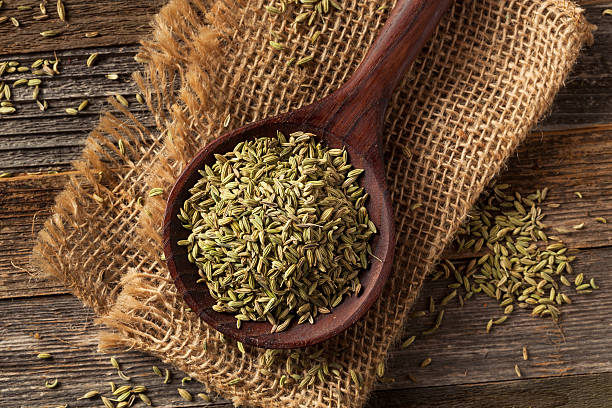
Spicy food was loved by Mark, a 45-year-old chef. But it gave me heartburn. He found fennel tea in the market in his area. A week later, he drank it up, and his heartburn ceased. Mark was revitalized. He has also introduced fennel seeds in his recipes. His customers adore the special taste and his stomach appreciates.
Science of Fennel Seeds
Research showss the advantages of fennel seeds. Studies indicate they interfere with levels of inflammation in the bowel. They also wrestle with dangerous bacteria. It maintains the balance of the digestive system. Fennel seeds are a natural antispasmodic. They help to stop abdominal cramps.
Most people are safe with them. It can be helpful to both kids and adults. First of all, pregnant women have to see a doctor. Never take big proportions as a first experiment to check the reaction of the body.
Fennel Seeds versus Over-the-Counter Remedies
What is the advantage of fennel seeds as compared to pills? They are natural and cheap. No severe chemicals. Most users show no side effects. As well, they are readily available in any grocery store. Some drugs are not gentle with thbodyb,, while fennel seeds are.
They are also delicious. It is better to have fennel tea rather than to take a pill. It is a little act that seems so mothering. You are nursing yourself back as nature used to do it.
Purchase and storage tips for Fennel seeds
Purchase fennel seeds in their entire form to have the freshest oness possible. Seek colorful green or brown seeds. The smell of those should be sweet and literally spicy. Do not use grey, lifeless seeds or seeds that have an odourless,as this indicates loss of potency.
Fennel seeds can be stored in an air-tight container. Store them in a dark, cool place. This retains their taste and advantages. They keep for a year when they are stored properly.
The family Trade
Maria was brought up to see her mom make a fennel tea. It is what their family used to settle games of upset stomach. In the adulthood, Maria continued the tradition. One taste of the fennel tea boosted her son out of tummy aches. This share of simple remedy united them.
Who can use Fennel seeds to his/her advantage?

Fennel seeds can be used by anybody that has problems with digestion. They assist in bloat gas and indigestion. They are ideal to those who consume heavy or spicy foods. Small quantities can be consumed even by children having sensitive stomachs.
Fennel seeds do not only need to be used when there is a problem. They lead to overall health of the gut. Having a good gut increases your mood and energy. It is just a small step but a big reward.
Conclusion
Nature presents fennel seeds. They are easy, cheap, and work. Not only does Sarah swear by them because of the relief of bloating,, but Mark swears by them to heal heartburn.
Fennel seeds are miraculous, whether you chew them, drink them as a te,a or put them in the food. They are soft and tough. Give a test run now and feel the difference in the gut. This is a natural cure that your body will appreciate.
-

 Health4 months ago
Health4 months agoTeething Rash in Babies: Causes, Remedies, and Prevention Tips
-
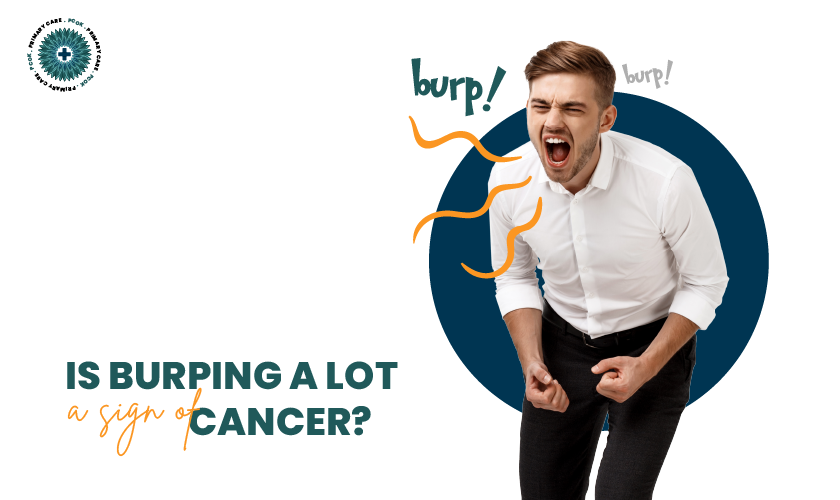
 Health4 months ago
Health4 months agoIs Burping a Lot a Sign of Cancer? Signs, Symptoms, and Risk Factors Uncovered
-

 Health4 months ago
Health4 months agoFennel Seeds for Digestion: Nature’s Remedy for a Healthier Gut
-

 Health4 months ago
Health4 months agoLemongrass Tea Every Day? Here’s What Happens to Your Body
-
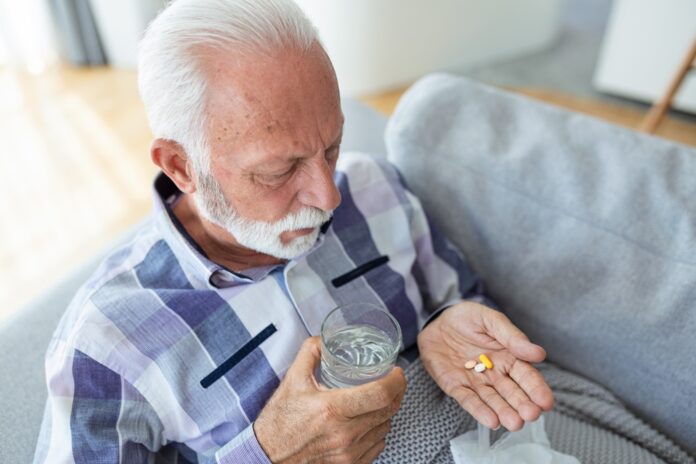
 Health4 months ago
Health4 months agoShould Antibiotics Make You Tired? What Science and Doctors Say
-

 Health4 months ago
Health4 months agoHow to Get Unhigh Fast: Proven Ways to Sober Up Quickly
-
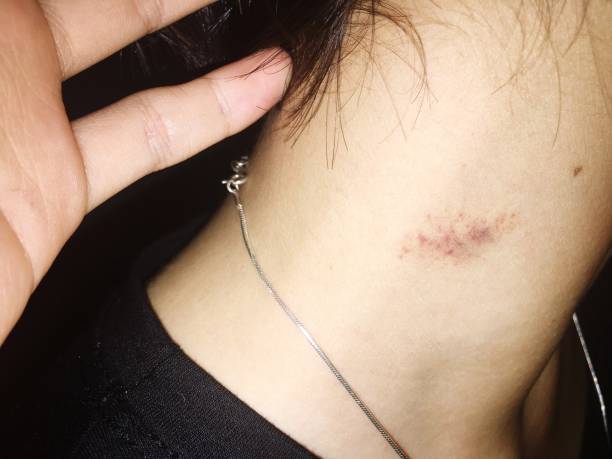
 Health4 months ago
Health4 months agoHow to Give a Hickey Fast: Quick Tips That Actually Work
-

 Health4 months ago
Health4 months agoWhat Does a Hemorrhoid Look Like: A Clear Guide for Home Diagnosis

